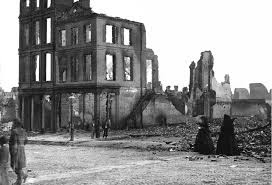
Essay 6: Reconstruction
Recognizing that inaccurate history often subtly promotes continuing white supremacy, the National Education Association (NEA) commissioned these articles and has posted some of them in slightly different form at its website. I thank Harry Lawson and others at NEA for the commission, for editorial suggestions, and for other assistance.
The United States is entering the sesquicentennial of Reconstruction. No other era has been so lied about. An “aha moment” convinced me of that, way back in January, 1969. I was teaching at Tougaloo College in Mississippi. I asked my “Freshman Social Science Seminar” on the first day of class, “What happened during Reconstruction?” Sixteen of my seventeen students, all African Americans, replied: That was the period right after the Civil War, when blacks took over the government of the Southern states, but they were too soon out of slavery, so they screwed up, and whites had to take control again.
I sat stunned. At least three lies resided in that sentence. African Americans never “took over”; all Southern states had white governors during Reconstruction, and all but one had white legislative majorities. The Reconstruction governments did not “screw up.” They adopted the best state constitutions most Southern states have ever had, started public schools for African Americans, and passed many other beneficial measures.
I visited nearby high schools and watched teachers presenting uncritically material on Reconstruction in textbooks written during the pre-Civil Rights era. Then I understood. My students had simply learned what they had been taught. This taught me that history had been deployed as a weapon against my students. To some extent it still is. Therefore teachers need to give students weapons to use in self-defense. Perhaps the best of these is historiography.
Put most simply, “historiography” means the study of history. When was this history written? Who wrote it? Who didn’t write it? Is it based on credible sources?
Reconstruction offers a fine way to introduce students to historiography. Teachers can visit used bookstores, which sell old textbooks for as little as 50¢. Many published before 1923 are also available on the web. Different editions of the same book offer a particularly effective demonstration of the importance of historiography. The 1966 edition of The American Pageant, for example, not yet influenced by the Civil Rights Movement, took largely negative views of blacks and of Reconstruction: “The ill-prepared colored voter, duped by Radicals, had allegedly done so poorly that the [white] South found further justification for denying him the ballot.”

Fortunately the same book, exactly 40 years later, emphasized accomplishments: “The radical legislatures passed much desirable legislation and introduced many badly needed reforms. For the first time in Southern history, steps were taken toward establishing adequate public schools. Tax systems were streamlined; public works were launched.”
Students cannot conclude that both editions are accurate — they are just too different.
In fact, white violence, not black ignorance, was the key problem during Reconstruction. The figures are astounding. In Louisiana in the summer and fall of 1868, white Democrats — then the party of white supremacy — killed 1,081 African American and white Republicans. In one judicial district in North Carolina, a Republican judge counted 700 beatings and 12 murders of his party members. Moreover, violence was only the most visible component of a broader pattern of white resistance to black progress. Students will find these facts and many others in Eric Foner’s Reconstruction. Comparing textbooks against facts then primes them to think about how and why authors might go so far astray between about 1890 and 1965, and why they finally improved after about 1970.
Essential Reading
- Loewen, “Five Myths About Reconstruction,” Washington Post, 1/25/2016, washingtonpost.com/opinions/five-myths-about-reconstruction/2016/01/21/0719b324-bfc5-11e5-83d4-42e3bceea902_story.html, shows how distorted views of Reconstruction affect race relations today.
All essays in the Correct(ed) series:
Introducing the Series
Essay 2: How to Teach Slavery
Essay 3: How to Teach Secession
Essay 4: Teaching about the Confederacy and Race Relations
Essay 5: Confederate Public History
Essay 6: Reconstruction
Essay 7: Getting History Right Can Decrease Racism Toward Mexican Americans
Essay 8: Problematic Words about Native Americans
Essay 9: How and When Did the First People Get Here?
Essay 10: The Pantheon of Explorers
Essay 11: Columbus Day
Essay 12: How Thanksgiving Helps Keep Us Ethnocentric
Essay 13: American Indians as Mascots
Essay 14: How to Teach the Nadir of Race Relations
Essay 15: Teaching the Civil Rights Movement
Essay 16: Getting Students Thinking about the Future